In this guitar lesson learn how to play chords in a jazz version of the 12 bar blues in the key of F.
The 3 main chords of a blues in F are:
- F7 (I chord
- Bb7 (IV chord)
- C7 (V chord)

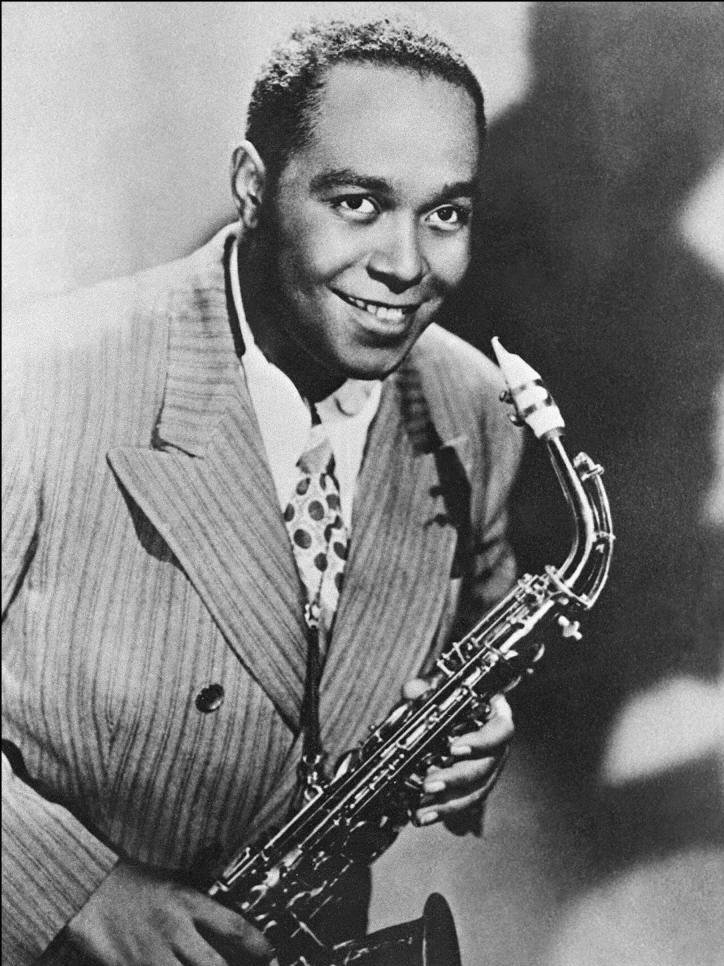
Charlie Parker.
However when jazz musicians play a 12 bar blues they often add extra chords making the progression more harmonically interesting and challenging to play. This chord progression is used for the Charlie Parker tunes Billie’s Bounce and Now’s The Time. Here you will learn 3 different versions of a jazz version of a 12 bar blues in F that incorporates these extra chords.
The first of these additional chords is the B diminished 7. This is used as a passing chord from Bb7 to F7/C in bar 2 with the B note acting as a bass note connecting the 2 chords.
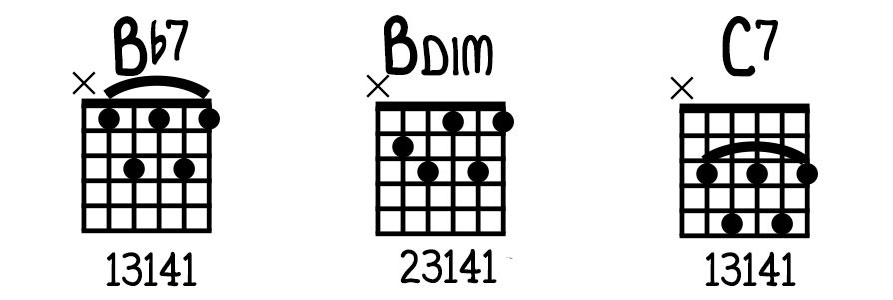
At the end of the 12 bars the turnaround progression of Am7 (iii) D7 (VI) Gm7 (ii) C7 (V) is used in the last 2 bars. These chords also appear earlier in the progression starting at bar 8 with Am7 (iii) D7 (VI) sharing a bar and Gm7 (ii) C7 (V) having a bar each.

The examples here also include some chromaticism with “wrong” neighbouring chords resolving to “correct” chords. This occurs 4 times on the progression when:
- B7 resolves to Bb7
- F#7 resolves to F7
- Bm7 resolves to Am7
- C#7 resolves to C7
Another element used here is a secondary dominant chord used to resolve to a target chord. This occurs with E9 resolving to Am7 in bars 7-8 of the third example.
Also if you haven’t encountered dominant 9th chords before I like to think of them as jazzy dominant 7th chords with an extra note added to the chord. For example a F7 chord contains the notes F A C Eb while the F9 chord contains the notes F A C Eb G.
Watch the video above to see the examples being played to help you to hear the rhythms used for all 3 variations.
F Blues Chord Variation 1
The first example uses basic bar chord shapes so if you’re familiar with them you should find it relatively easy to play these patterns and connect them together. However in reality you wouldn’t use full bar chord shapes very often in a jazz context as the 5th interval in the bass of the chord can tend to sound muddy in a jazz band context. The next 2 examples will demonstrate higher pitched versions of the chords that will create more space and sit harmonically better in a jazz band context.
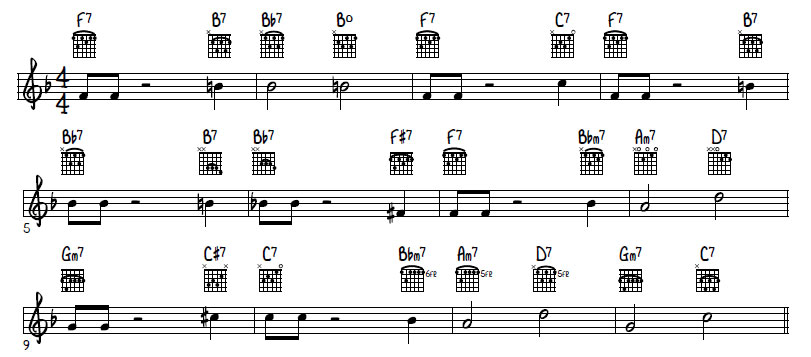
F Blues Chord Variation 2
This example uses chord shapes mainly on the first 4 strings of the guitar and between frets 3 and 6 effectively using the mid-range of the guitar. Note that many of the chords are in the same position or only a fret or 2 away from each other making the changes relatively easy.
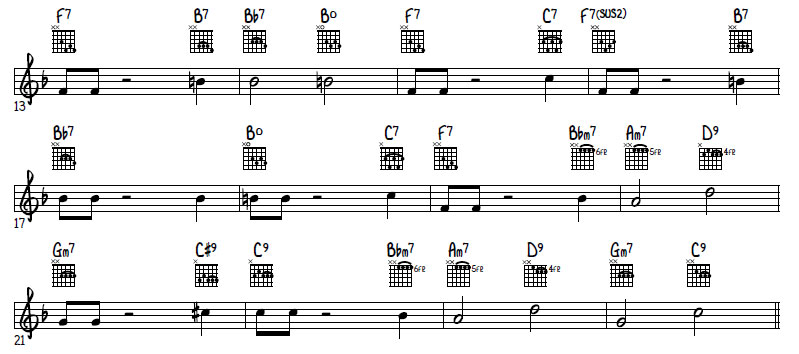
F Blues Chord Variation 3
The final example here moves higher up the neck with the chords between the 8th and 12th frets. This example follows the same exact chord changes and rhythm as the previous two except for the variation of E9 resolving to Am7 in bars 7-8.
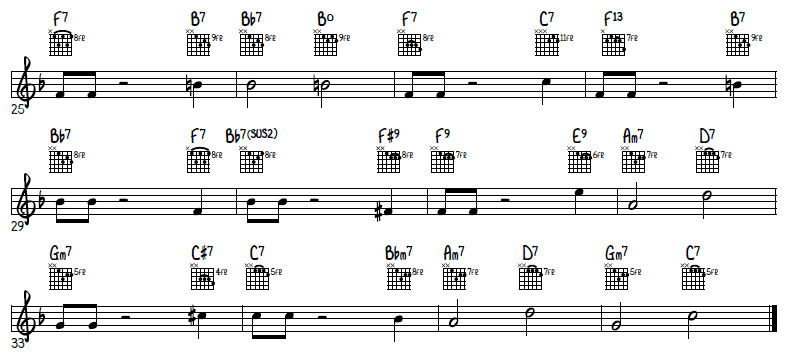
Once you’ve got these chord shapes and concepts under your fingers see if you can incorporate them when playing along with other jazz tunes (AKA jazz standards) or even use them in other styles such as funk, pop and rock etc.



